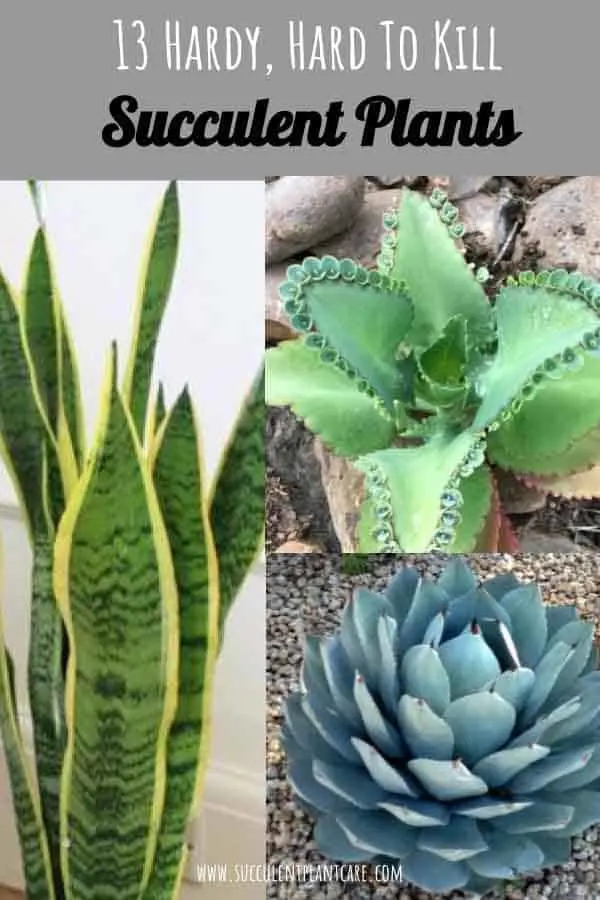Are you a plant killer?
Do you love having plants around but sadly, the love is unreciprocated? I have a confession to make, I was one of those plant killers until I discovered succulent plants.
I started from one succulent plant. Now I have an entire collection and I am quickly running out of space in my tiny porch that I am actually giving some baby plants away to friends.

Generally speaking, succulents are easy going, low maintenance plants. They have grown in popularity over the years and have become so popular that you can find them anywhere these days.
If you want to try your hand at growing succulents but you are afraid of killing them, start with the easy ones first. There are succulent species that are easier to grow than others. Reserve the exotic, rare types for later on when you gain more experience with these plants.
I have compiled a list of succulent plants that are easy to care for and almost impossible to kill. The quickest way to accidentally kill a succulent plant is to literally shower it with love and attention. They thrive from minor neglect, or as I like to call it, ‘watchful neglect’.
Below are 13 hard-to-kill Succulents:
Agave
Agave is a large genus of succulents. Their distinguishing features are their rosette shapes and pointy leaves. Agave species vary widely, some are dwarf species and others are huge plants capable of growing up to 10 feet tall. They can be cultivated in ground or grown in pots and containers. They do not require much care and will thrive in different conditions and climates, from light shade to full intense sun. Some species are also cold-hrdy. These plants are great for those people looking for an easy, no fuss plant. They are hardy and difficult to kill.
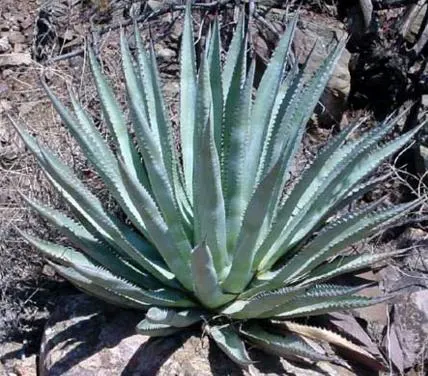
Aloe
Aloe is a large and popular genus consisting of small dwarf species and large tree-like species growing up to 30 feet (10m). They have thick, fleshy, green to bluish-grey-green leaves. Some varieties have whites flecks on the stem surfaces. The dwarf species are very suitable as indoor plants in pots or containers. Most larger aloe species will do well in full sun and can be planted outdoors as landscape plants or in large containers. Some large species will tolerate mild frost with little to no damage to the plant. These are low maintenance plants that require very little care and attention.
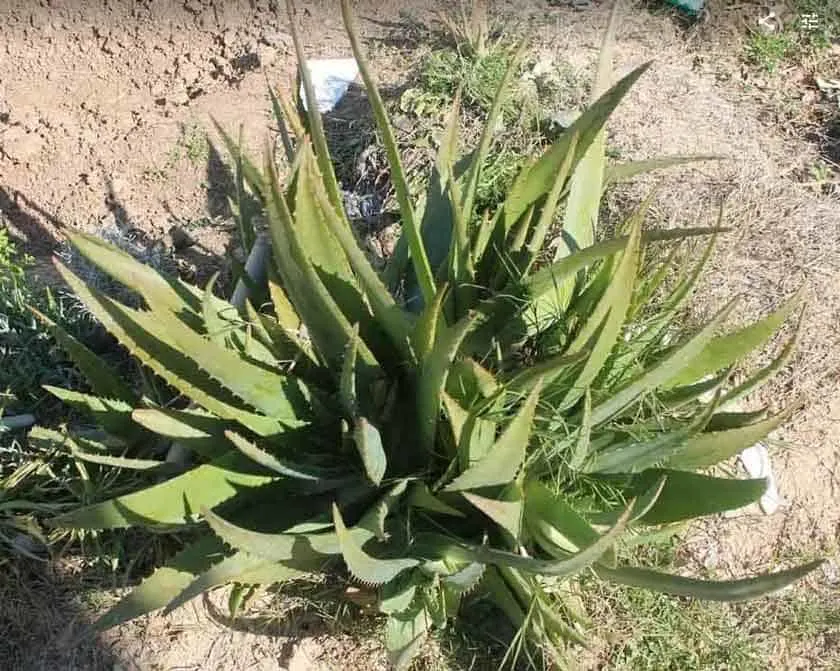
Crassula Ovata (Jade Plant)
Crassula is a large genus of succulent plants. One of the most common of them is Crassula Ovata or Jade Plant (also known as money tree, lucky plant, or friendship tree). They are native to South Africa and Mozambique. Jade plants are evergreens. They are recognized for their thick, fleshy, shiny, smooth leaves that grow in opposite pairs. Leaves range in color from dark jade green in the shade to red on the edges when exposed to direct or full sunlight. Some varieties have a golden yellow-green hue to their leaves (known as Crassula Ovata or Hummel’s Sunset). Their branches thicken with age.
Jade plants are forgiving, low maintenance plants. They can thrive in different lighting conditions. They can do well in full sun once acclimated. Their leaves turn a reddish color, especially at the tips when exposed to full sun.
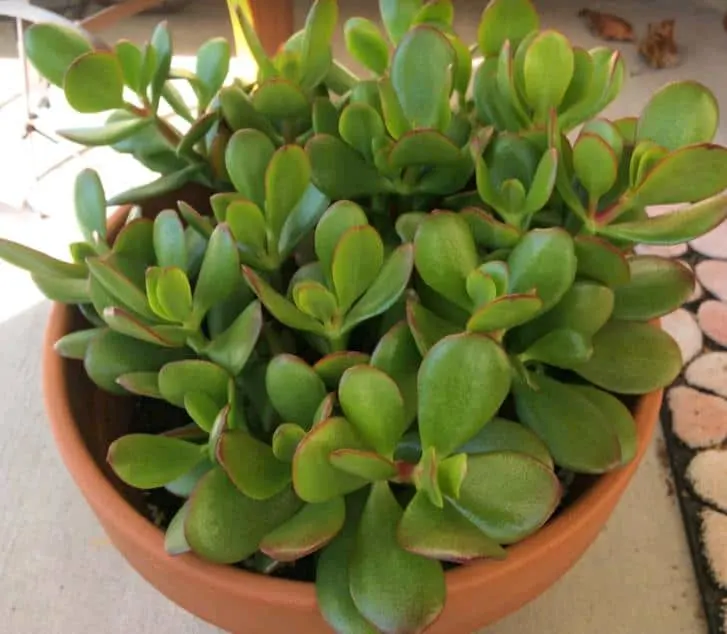
Crassula Tetragona (Mini Pine Trees)
Native to South Africa, this miniature pine tree-looking succulents have thin narrow green leaves and brown barks and stems that can grow up to 3 feet tall. They form shrubs and become tree-like as they grow. They produce small white flowers that appear at the tips of the plant. They can suffer from sunburn and need protection from intense full sun. These are very easy, low maintenance plants and one of the easiest ones to propagate from stem cuttings. I have several of these plants grown from stem cuttings in different planters. My original plant is a few years old and is going strong.
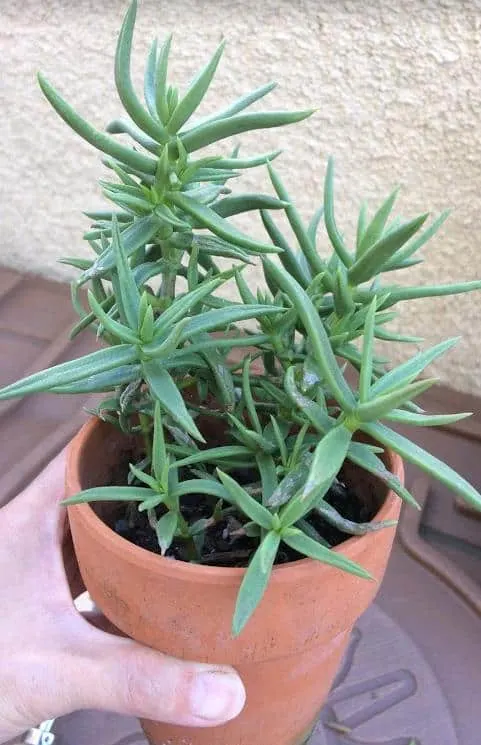
Portulacaria Afra (Elephant Bush)
Native to South Africa, this is a hardy, low maintenance plant that is very easy to grow. They serve as food for elephants in their native habitat and can grow upto 20 feet tall. They have glossy green leaves that start out as a small bush that eventually grow tree-like. The stem gets thicker over time as the plant matures.
I was first attracted to this plant because I thought I was buying a mini jade plant. Sometimes referred to as ‘Dwarf Jade’ or ‘Miniature Jade’, it has no relation to the actual jade plant. These plants are very easy to keep alive and can tolerate different conditions. I have used stem cuttings of this plant and have them growing in different planter. I often use this plant as fillers in different arrangements. My original plant is several years old and has withstood neglect and other conditions.
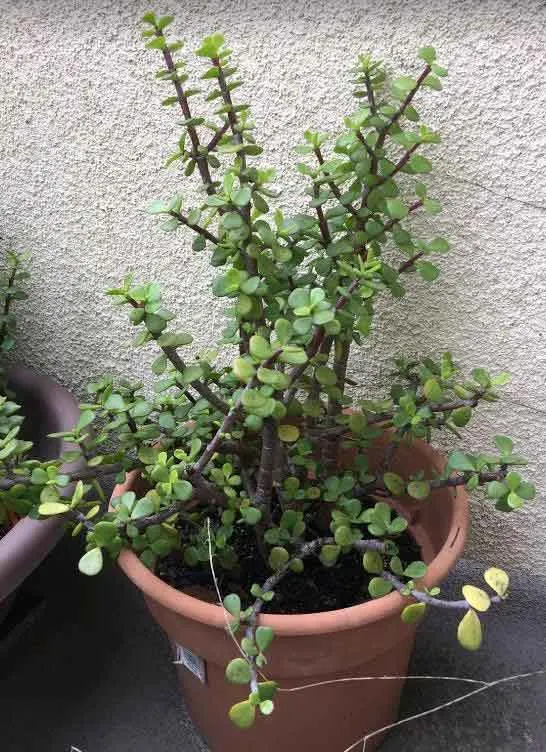
Aeonium ‘Blushing Beauty’
Aeonium ‘Blushing Beauty’ is a hybrid, made from a cross of two different aeoniums. This is an aeonium I find that is very easy to grow and propagate. I have a few of these plants growing vigorously, all grown from stem cuttings.
Aeoniums are hardy plants and can withstand cold. They grow best in full sun to partial shade. Aeoniums go dormant in really hot and dry weather conditions. Their leaves will curl and drop to prevent excessive water loss. Their true growth period is during winter or spring. They can be grown in ground or in containers.
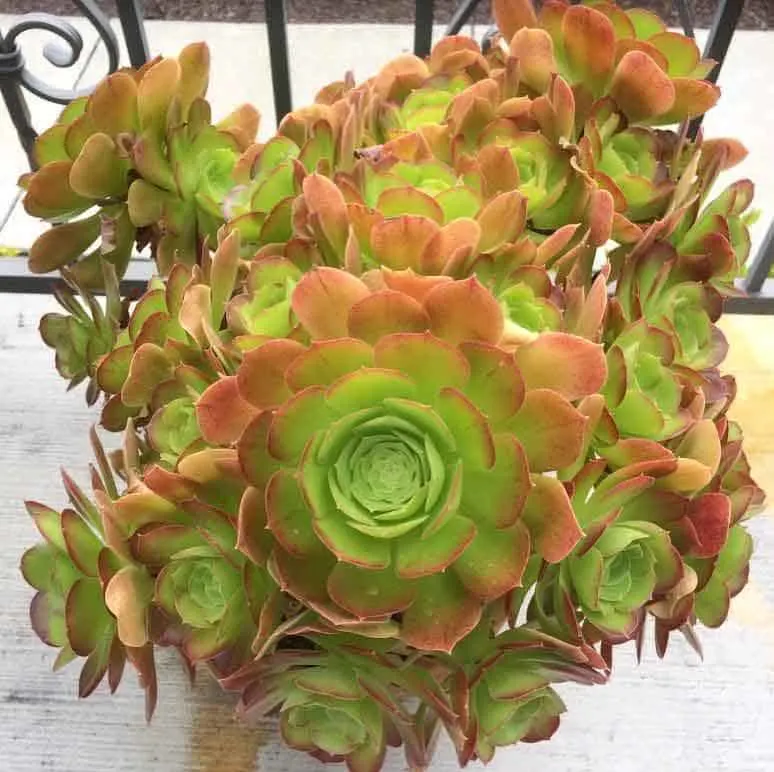
Euphorbia Milii (Crown of Thorns)
Native to Madagascar, these succulents have highly adaptable to different growing environments. They can grow up to 1-2 feet tall and are valued for the flowers they produce which are usually red, pink or white in color. These plants are covered in sharp thorns about ½ inch long. The name, ‘Crown of Thorns’ comes from the biblical story of Christ’s crucifixion and identifies the plant as the mock crown placed on Jesus’ head at the crucifixion. They can be grown in the shade or full sun. These are tough plants and are not easy to kill.
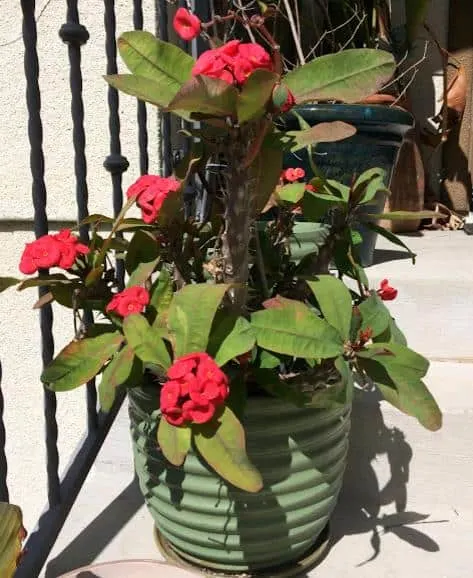
Haworthia Attenuata (Zebra Plants)
Native to South Africa, this plant resembles an aloe plant at first glance. They are actually related with the same subfamily. They have thick and pointed leaves with zebra-like white variegated stripes that appear as warty growth. They can be grown indoors or outdoors and can tolerate different lighting conditions.
They are slow growers at first, but can grow rapidly and produce pups and offsets once established. I have been growing mine outdoors all year. It has produced plenty of pups and offshoots and is one of the easiest plants to take care of. Variegated zebra plants have horizontal yellow and green colors on the leaves as well as white ridges.
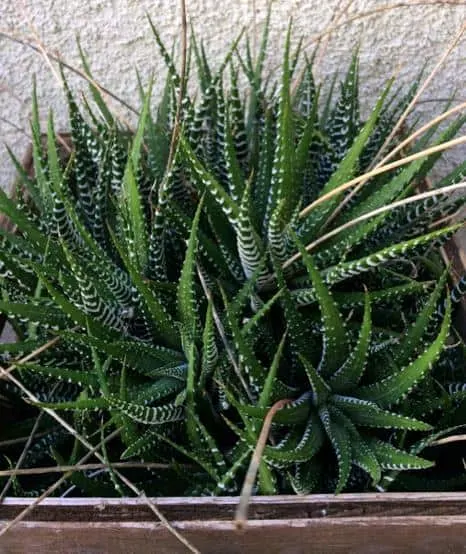
Kalanchoe Daigremontiana (Mother of Thousands)
Also called Bryophyllum Daigremontianum (commonly called Mother of Thousands, Alligator Plant, Mexican Hat Plant), these are attractive and unusual looking plants with large green leaves that form baby plantlets along the edges. These plantlets are known to grow anywhere they land and can be difficult to get rid of because they are rapid growers, giving them the name ‘Mother of Thousands’.
These plants are hardy and can tolerate intense heat once established. If you are looking for a plant that easily multiplies, this is the plant to try. Be careful as they can easily get out of hand. These plants are considered a nuisance to some and as invasive weed in some areas. To control growth, grow them in pots or containers and away from other plants or the ground.
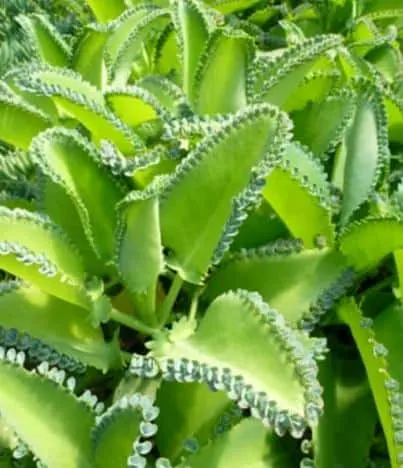
Kalanchoe Delagoensis (Mother of Millions, Devil’s Backbone, Chandelier Plant)
Also referred to as Bryophyllum Delagoensis, these are often mistakenly for Mother of Thousands (see the plant above) due to their similarities. These are rapid growing plants that are known to multiply easily anywhere it lands, giving them their rightful name ‘Mother of Millions’. They produce little plantlets that grow from the ends of the plant. These plantlets are capable of growing relentlessly anywhere they land, and their seeds can survive for years even when the plants are pulled out.
These plants are not only drought tolerant, but highly adaptable to different environments, and are considered as weed or invasive species in some parts of the world. If you are looking for an easy plant to grow that’s also hard to kill, you can consider one of these but be careful as they can quickly get out of hand. They are best grown in containers or pots to control their growth.
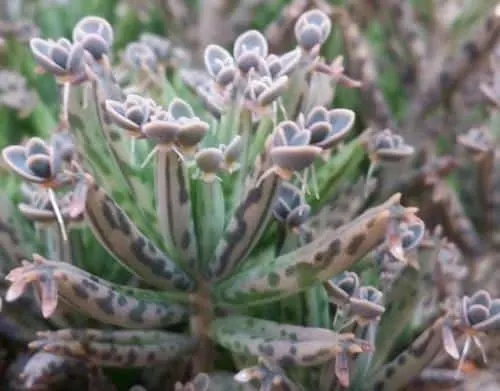
Sansevieria Trifasciata (Snake Plant, Mother-in-Law’s Tongue)
Sansevieria Trifasciata, commonly known as Snake Plant or Mother-in-Law’s Tongue are native to West Africa. They have long, slightly windy leaves that point upwards. The leaves are mostly green, some varieties have yellow edges. Snake plants are known to help purify the air by removing formaldehyde and benzene toxins from the air in your home. These plants make excellent starter plants due to their ability to tolerate neglect. These are easy going plants and are popular houseplants to have because they can tolerate different lighting conditions, even low light.
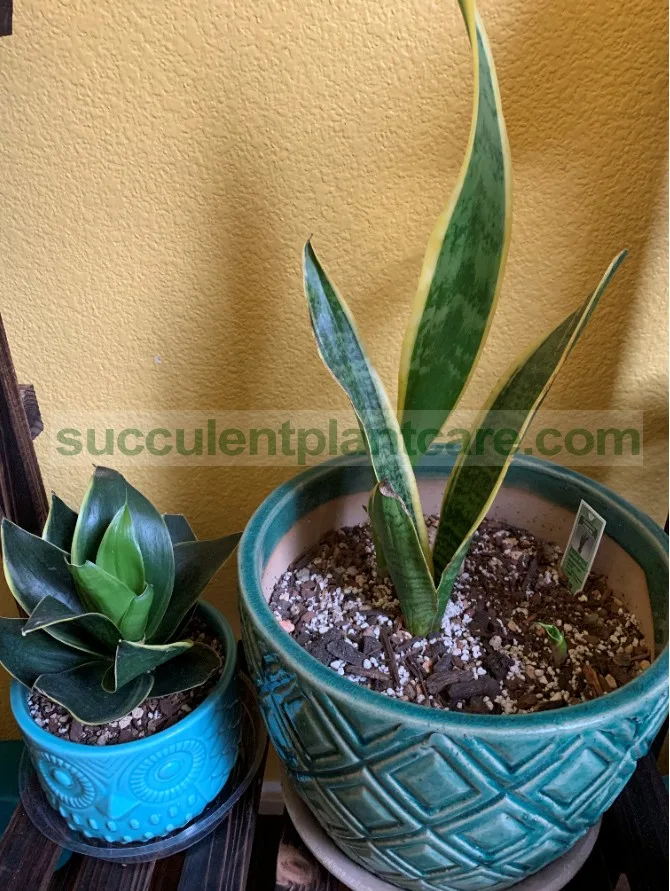
Sempervivum (Hens and Chicks)
Hens and chicks are amazing and very popular succulent plants. Known for their striking beauty and variety, they are popular as houseplants as well as landscape plants. They multiply by growing clusters of small baby chicks around the mother plant, giving them their name “Hens and Chicks”.
Hens and chicks are easy to grow and come in many different varieties of colors, sizes and textures to choose from. Some can grow very large and some remain tiny. They can grown in full sun or partial shade making them versatile plants. But the optimal coloration is achieved when placed in full or bright sunlight.
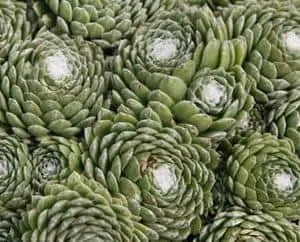
Sedums
Sedums or stonecrops, are easy succulents to grow. Sedums are low growing, evergreen perennials that make excellent groundcovers. They grow by spreading and sprawling vertically. They can also be grown in containers and their growth is easier to control in containers. Sedums are low maintenance plants and require very little attention. It is easier to kill a sedum with too much care than with neglect.
Sedums thrive in bright, sunny locations and can also tolerate poor lighting conditions. These plants are easy to propagate and spread. Shorter varieties can grow anywhere a part of the plant is touching the soil. The plant will send out roots from where the stem or leaf is touching the ground and root itself, which is often enough to get a new plant started. They are able to withstand heat, lots of sunlight with little precipitation, and are also frost hardy making them very easy plants to have.
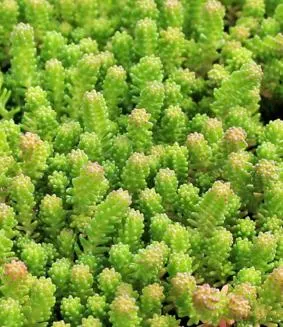
Sedum Rubrotinctum (Jelly Bean, Pork and Bean Plants)
Sedum Rubrotinctum or Jelly Bean Plants have jelly bean shaped leaves that are green in the shade and turn red at the tips when exposed to full sun. They produce bright yellow, star-shaped flowers around springtime. I find these plants very easy to grow and propagate both from stem cuttings as well as from leaves. I have several of these plants growing in different planters. They are able to withstand neglect, mild frost and intense heat. These plants are tough and difficult to kill.
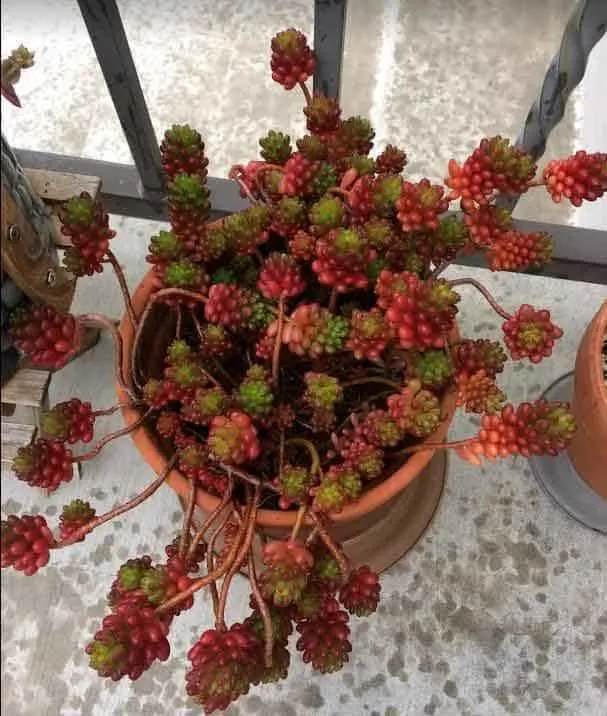
The above plants are great choices if you want tough, hard to kill plants. Follow these basic guidelines when handling them and you will have plants that will last you for years.
Guidelines for longer lasting succulents:
Water
The best way to accidentally kill succulents is by over watering them. Succulents hold water in their tissues, leaves and stems, making them drought tolerant plants. This does not mean they do not need to be watered at all. A good rule of thumb is to water the plants thoroughly, let the excess water drain out of the holes of the pot, then allow the plants to dry out between watering. Feel the top inch of the soil for moisture. Make sure the top inch is dry before watering again. Generally speaking, they need to be watered every 7-10 days during warmer months and less during colder months. For more details about watering, click on How and When to Water Succulents.
Soil
Along with proper watering techniques, you also need a well draining soil or potting mix. Succulent roots do not like to sit in water for too long and are susceptible to root rot. Therefore, a well draining soil is a must. You can use a commercial cactus potting mix and add perlite to make it more porous. You can also make your own potting mix. Click on Soil and Fertilizer for Succulents for more detailed information.
Sunlight
Most succulents require bright sunlight, but they need protection from full, intense afternoon sun. Some plants can suffer from sunburn and sun damage in full sun, especially baby plants. If bringing indoor plants out for the summer, they need to be slowly acclimated to the more intense sunlight outdoors before completely exposing them to the sun’s rays. Generally speaking, most succulents need at least 4-6 hours of bright light to thrive. Click on Sunlight for Outdoor Succulents.
If you are wondering where you can purchase succulents and cacti online, please check out my Resource Page to get some ideas.
